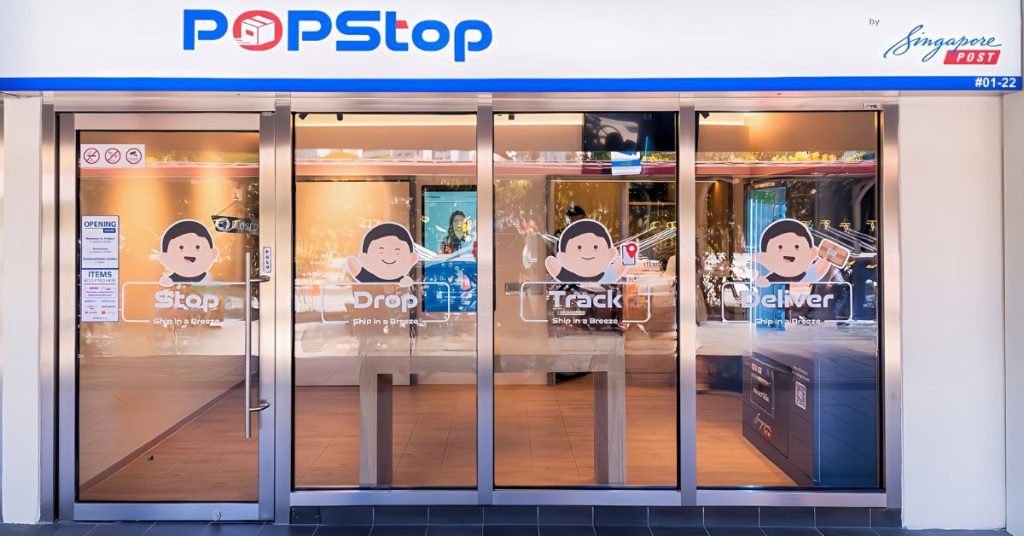Singapore Post (SingPost) has closed 12 of its post office branches in the last two years, amounting to one in five of its locations, according to The Straits Times.
This move comes as part of the company’s effort to stay relevant in a rapidly digitalising world where fewer people rely on traditional mail.
With 44 branches still in operation, SingPost is pivoting its business to meet changing customer needs and ensure its services remain cost-effective.
So, what’s really going on with all these closures?
Declining mail volumes
The most significant reason behind these closures is a sharp drop in mail volumes.
As more people opt for electronic communication, whether it’s emails, WhatsApp messages, or Zoom calls, fewer letters are being sent the traditional way. This has led to reduced demand for physical postal services.
The news portal reported that Senior Minister of State for Digital Development and Information Tan Kiat How mentioned in Parliament that the average consumer sends less than one letter per month.
Most businesses, which make up over 80% of mail users, have also shifted to digital platforms.

With fewer letters being posted, it makes sense that SingPost would need to reassess the number of physical branches it operates.
Where have the post offices gone?
Of the 12 branches that have closed, five were located in popular malls like Suntec City, Northpoint City, and Westgate. The rest were scattered across standalone branches, community clubs, office buildings, and Housing Board blocks.
One of the most recent closures was the branch at The Clementi Mall, which had been operating for 11 years before its doors shut for good on September 20.
Customers who relied on this branch now have to travel to Clementi West Street 2, a 15-minute bus ride away, to access the nearest alternative.
What’s next?
Although fewer post offices are around, SingPost is not abandoning its customers. In fact, the company is expanding other customer service options.
SingPost’s POPStation (Parcel Locker Network) is now available at over 100 locations and 300 condominiums, allowing customers to collect their parcels anytime, day or night.
To meet the growing needs of ecommerce users, SingPost has also introduced services like POPStop for dropping off parcels and POPDrop for bill payments and purchasing shipping labels.
There are even plans to expand these services to more convenient locations, like heartland stores and train stations.
According to The Straits Times, SingPost’s spokesperson explained that the company aims to create a “comprehensive network of accessible touchpoints that deliver essential postal services to the community,” ensuring they remain useful and cost-efficient.
Postal services in the age of digitalisation
As digitalisation rapidly transforms how we communicate and conduct business, SingPost has had to rethink its business model.
While traditional mail services are declining, the company has seen a rise in revenue from its Singapore and Australia operations, thanks to increased parcel delivery and ecommerce services.
For the first quarter of 2024, SingPost reported an operating profit of S$24.4 million, more than double the amount from the same period the previous year.
Despite this growth, letter mail and printed paper volumes in Singapore dropped by 8.1% over the past year.
To keep up with rising costs and its obligations as Singapore’s national postal service, SingPost raised postage rates in October 2023—the first major increase in nearly a decade.
As more businesses and government agencies move towards online communication, the role of traditional post offices will likely continue to shrink.
In response, Singapore’s Infocomm Media Development Authority is evaluating the relevance of postal service obligations in today’s context, aiming to ensure they adapt to the needs of modern consumers.
With the expansion of self-service options like parcel lockers and drop-off points, it’s clear that SingPost is focused on finding new ways to provide value to its customers.
While physical post offices may be fewer in number, the company is making sure postal services remain accessible as people embrace the digital age.
Featured Image Credit: KrASIA